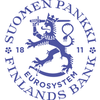Geopolitical tensions create new threats to financial stability
Finland’s financial system has remained stable despite the recession in the economy. The risks have been controlled particularly as a result of the long-term improvements made in financial regulation and supervision and the macroprudential policy measures taken.

Russia’s war in Ukraine, the conflict in Gaza and trade restrictions between different countries could create disruptions in the global economy and financial system. “The resilience of Finland’s financial system has remained robust. Geopolitical tensions have increased, and this could create new threats to financial stability,” notes Bank of Finland Deputy Governor Marja Nykänen in the Bank’s assessment of Finland’s financial stability, published today.
The financial stability assessment notes that the standstill in the housing and real estate markets and the considerable sensitivity to interest rate movements are increasing the risks in Finland’s financial system. Prices of existing homes have decreased substantially, housing sales have fallen and the construction of new dwellings has virtually halted. Bankruptcies among construction industry companies have increased, and banks’ credit risks on loans to the construction sector have grown. At the same time, household indebtedness has decreased, which has eased the risks.
If interest rates are cut and the economy recovers as anticipated, this will bolster the stability of Finland’s financial system. On the other hand, the risks faced by banks and by residential property and real estate investors could increase if housing and real estate sales do not pick up.
There will also be new and unforeseeable threats associated with digitalisation and climate change, and these could undermine financial stability in both the short and the long term. Digitalisation in the financial sector brings many opportunities but also increases risks regarding the transmission of disinformation and information influencing. The risks to financial stability arising from climate change and biodiversity loss are in part still difficult to assess.
Preparations should be made for dealing with new risks brought by a more challenging operating environment. “Expanding or reducing financial market regulation cannot in itself be the objective. Regulation must be taken forward on the basis of careful planning. Financial regulation should anticipate changes in the operating environment so that we are not simply fighting old crises,” says Deputy Governor Nykänen.
The ability of banks and borrowers to withstand economic shocks must be strengthened. A diversity of macroprudential policy measures will reinforce the resilience of banks and borrowers, enabling better preparedness for fluctuations in housing market activity and housing prices. Trust in the resilience and reliability of the financial system will be enhanced through further preparation for liquidity and cyber risks.
European companies need more diversified ways of financing their investments and creating a foundation for growth in their business. The European Union would benefit from a single and well-functioning capital market. “European businesses are too dependent on bank financing. The EU needs a capital markets union so that Europe can continue to be competitive in the face of pressures from other major economic powers. A strong European economy is the best protection against disruptions to the financial system,” says Nykänen.
- Presentation 14 May 2024, Deputy Governor Marja Nykänen
- Bank of Finland Bulletin publication website (in Finnish)
Keywords
Links
The Bank of Finland is the national monetary authority and central bank of Finland. At the same time, it is also a part of the Eurosystem, which is responsible for monetary policy and other central bank tasks in the euro area and administers use of the world’s second largest currency – the euro.
Subscribe to releases from Suomen Pankki
Subscribe to all the latest releases from Suomen Pankki by registering your e-mail address below. You can unsubscribe at any time.
Latest releases from Suomen Pankki
År 2025 beviljade övriga finansinstitut mer företagslån jämfört med året innan4.12.2025 10:00:00 EET | Pressmeddelande
Nya företagslån utbetalades både under det tredje kvartalet 2025 och från början av året fram till september betydligt mer än ett år tidigare. År 2024 utbetalades sparsamt med företagslån från övriga finansinstitut.
Vuonna 2025 muut rahoituslaitokset myöntäneet enemmän yrityslainoja kuin edellisenä vuonna4.12.2025 10:00:00 EET | Tiedote
Uusia yrityslainoja nostettiin sekä vuoden 2025 kolmannella neljänneksellä että vuoden alusta syyskuuhun mennessä merkittävästi enemmän kuin vuotta aikaisemmin. Vuonna 2024 yrityslainoja nostettiin muista rahoituslaitoksista vähäisesti.
In 2025, other financial institutions granted more loans to non-financial corporations than the previous year4.12.2025 10:00:00 EET | Press release
New loans to non-financial corporations were drawn down significantly more both in the third quarter of 2025 and in January–September 2025 than one year earlier. In 2024, drawdowns of corporate loans from other financial institutions were limited.
Företagen lyfte rikligt med lån från bankerna i oktober 202528.11.2025 10:00:00 EET | Pressmeddelande
I oktober 2025 lyfte företagen[1] nya lån[2] från banker med verksamhet i Finland för 2,4 miljarder euro, vilket är 36 % mer än vid motsvarande tidpunkt för ett år sedan och 52 % mer än i genomsnitt i oktober 2011–2024. I oktober gjordes mest utbetalningar[3] till företag inom industrisektorn.
Lokakuussa 2025 yrityslainoja nostettiin runsaasti pankeista28.11.2025 10:00:00 EET | Tiedote
Lokakuussa 2025 yritykset[1] nostivat uusia lainoja[2] Suomessa toimivista pankeista 2,4 mrd. euron edestä, mikä on 36 % enemmän kuin vuosi sitten vastaavana aikana ja 52 % enemmän kuin keskimäärin lokakuussa vuosina 2011–2024. Lokakuussa eniten nostoja[3] tekivät teollisuusalan yritykset.
In our pressroom you can read all our latest releases, find our press contacts, images, documents and other relevant information about us.
Visit our pressroom